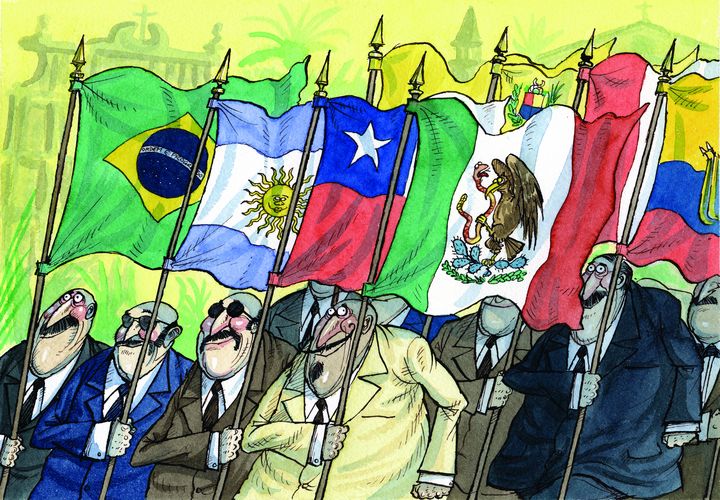No longer at the centre of the financial crisis as in times past, Latin America has been relatively resilient amid the storm generated by the US credit crisis. On the contrary, the region has been seen as a sort of safe haven, given the strong fundamentals, deepening local markets and upward ratings trajectories in countries like Brazil, Peru and Colombia.
But this decoupling theory could start to look flimsy as the situation in the US goes from bad to worse; and it will be put under even more strain in coming months. The relative value equation will likely continue to take its toll on LatAm assets, as investors are distracted by bargains left amid the rubble north of the border
While loan markets remain relatively active, there has already been considerable negative spillover into the bond markets, where LatAm new issuance volumes have been reduced to a trickle this year. In a reversal of recent trends, sovereigns have been the dominant issuers, dampening any short-term hopes of the development of a true LatAm high-yield market.
Lower tier corporates are essentially shut out. While blue chips – in theory – have access, more often than not they are staying on the sidelines, judging the new pricing paradigm to be an unfair reflection of what remain strong credit fundamentals. For now, at least, borrowers won't yield to investor demands.
There is often a stark contrast between positive local sentiment and the gloom hanging over the global markets. Optimism is rife in countries like Brazil, where investors are still anticipating a long-awaited investment grade rating. Local banks, such as Bradesco, have taken advantage of the enormous opportunities in Brazil's DCM, ECM and M&A, and are spreading their wings in all these markets.
Learning from previous crises, LatAm countries have worked hard to develop their local capital markets, which now act as an important funding alternative, buffering them against external shocks. They are also, of course, an arena of opportunity – and revenue – for banks looking to grow their business in the region.
Enthusiasm for local currency markets has reached new heights among foreign investors as they outperform most asset classes in the EM universe, but with negative pressures growing, some are wondering how long the party can last.
While Brazil's local market ostensibly appears to be on course to have a banner year, with more than US$50bn of issuance expected, this may simply be spillover from 2007. In reality, the market has been stalling as investors shun all but top tier names. And what was once a booming Brazilian IPO market is becoming lethargic as foreign money beats a retreat.
It is also perhaps not surprising that the real estate sector, which was a driver behind both Brazil's equity boom and Mexico's local debt markets, is also sputtering, though private equity is starting to move in as public markets cool.
Meanwhile, infrastructure needs loom large and will have to be addressed if LatAm wishes to realise stellar growth rates and leave behind the instability of the past. The good news is that governments recognise this and are turning to the market to ensure the situation changes.
